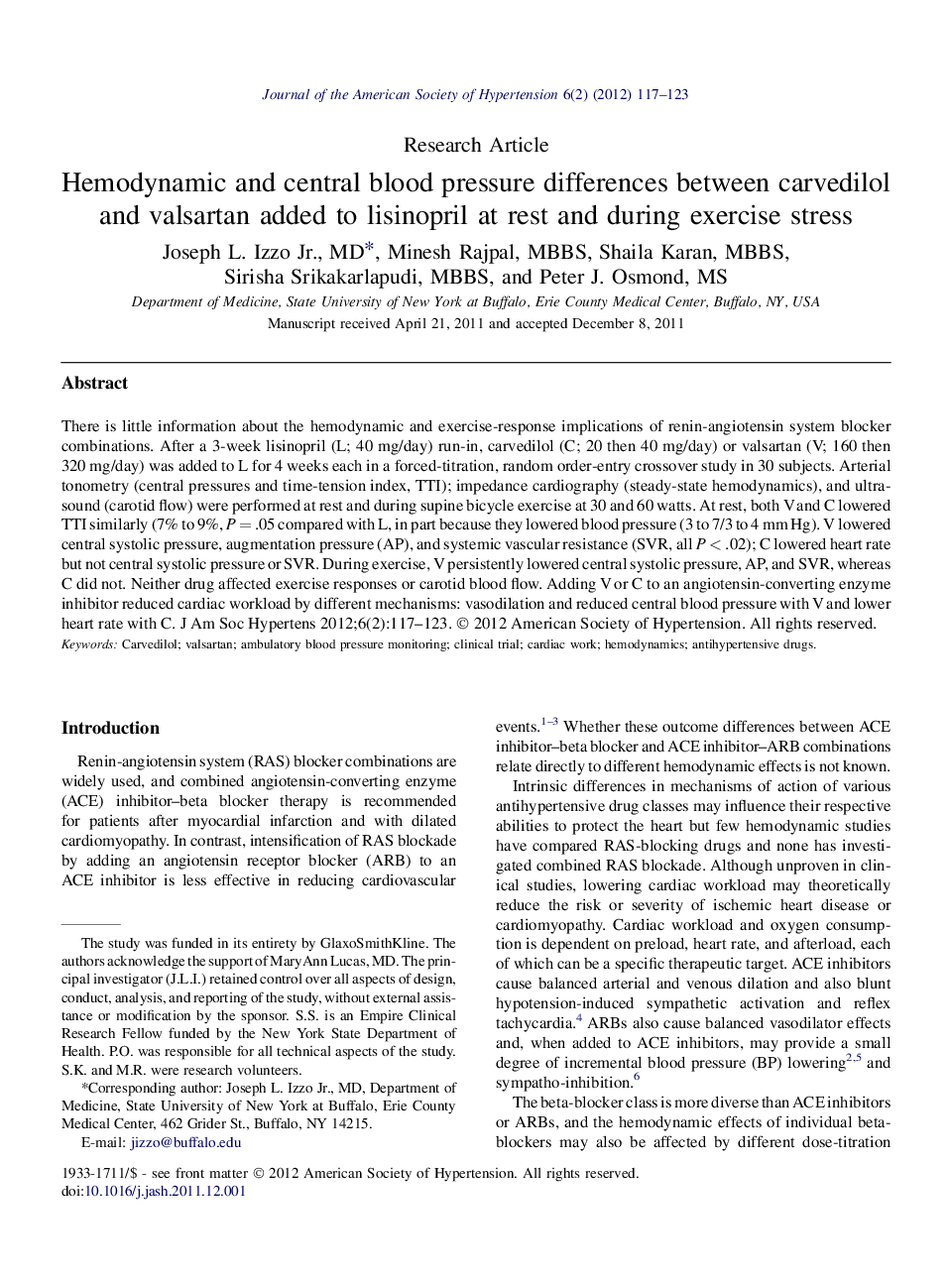| کد مقاله | کد نشریه | سال انتشار | مقاله انگلیسی | نسخه تمام متن |
|---|---|---|---|---|
| 2956961 | 1578068 | 2012 | 7 صفحه PDF | دانلود رایگان |

There is little information about the hemodynamic and exercise-response implications of renin-angiotensin system blocker combinations. After a 3-week lisinopril (L; 40 mg/day) run-in, carvedilol (C; 20 then 40 mg/day) or valsartan (V; 160 then 320 mg/day) was added to L for 4 weeks each in a forced-titration, random order-entry crossover study in 30 subjects. Arterial tonometry (central pressures and time-tension index, TTI); impedance cardiography (steady-state hemodynamics), and ultrasound (carotid flow) were performed at rest and during supine bicycle exercise at 30 and 60 watts. At rest, both V and C lowered TTI similarly (7% to 9%, P = .05 compared with L, in part because they lowered blood pressure (3 to 7/3 to 4 mm Hg). V lowered central systolic pressure, augmentation pressure (AP), and systemic vascular resistance (SVR, all P < .02); C lowered heart rate but not central systolic pressure or SVR. During exercise, V persistently lowered central systolic pressure, AP, and SVR, whereas C did not. Neither drug affected exercise responses or carotid blood flow. Adding V or C to an angiotensin-converting enzyme inhibitor reduced cardiac workload by different mechanisms: vasodilation and reduced central blood pressure with V and lower heart rate with C.
Journal: Journal of the American Society of Hypertension - Volume 6, Issue 2, March–April 2012, Pages 117–123